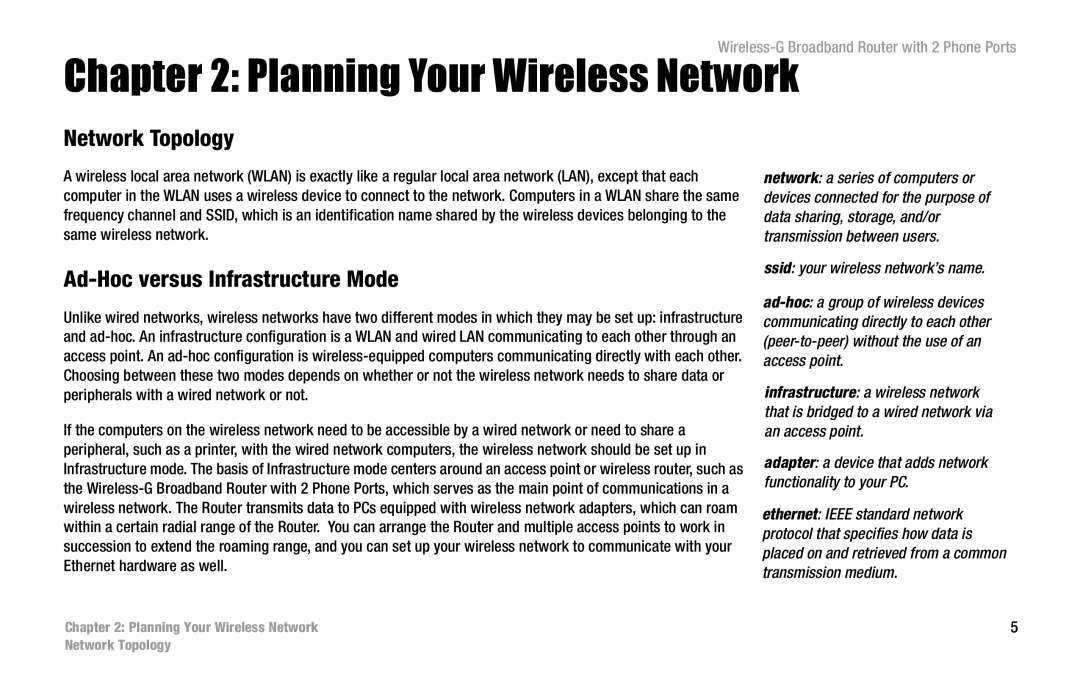Wireless-G Broadband Router with 2 Phone Ports
Chapter 2: Planning Your Wireless Network
Network Topology
A wireless local area network (WLAN) is exactly like a regular local area network (LAN), except that each computer in the WLAN uses a wireless device to connect to the network. Computers in a WLAN share the same frequency channel and SSID, which is an identification name shared by the wireless devices belonging to the same wireless network.
Ad-Hoc versus Infrastructure Mode
Unlike wired networks, wireless networks have two different modes in which they may be set up: infrastructure and
If the computers on the wireless network need to be accessible by a wired network or need to share a peripheral, such as a printer, with the wired network computers, the wireless network should be set up in Infrastructure mode. The basis of Infrastructure mode centers around an access point or wireless router, such as the
network: a series of computers or devices connected for the purpose of data sharing, storage, and/or transmission between users.
ssid: your wireless network’s name.
infrastructure: a wireless network that is bridged to a wired network via an access point.
adapter: a device that adds network functionality to your PC.
ethernet: IEEE standard network protocol that specifies how data is placed on and retrieved from a common transmission medium.
Chapter 2: Planning Your Wireless Network | 5 |
Network Topology
